WE often overlook the people who create headstones and take care of the grounds they sit on. RAPHAELLA SAROUKOS sat down with a monumental mason and a cemetery worker to see what it’s like to work in the industry of death
It records when they graced the earth, the people they encountered and how they’re in the thoughts of the ones they leave behind.
The earliest form of headstone was a steel, a stone or wooden slab used as a funerary monument.
The stele was carved with text and intricate ornaments of the deceased, commemorating a person’s life, their achievements or preserving their physical image.
This tradition of setting life in stone has continued to today. Headstones are the modern Western equivalent of a stele and today’s technology allows people to capture their loved one’s lives more accurately than ever.
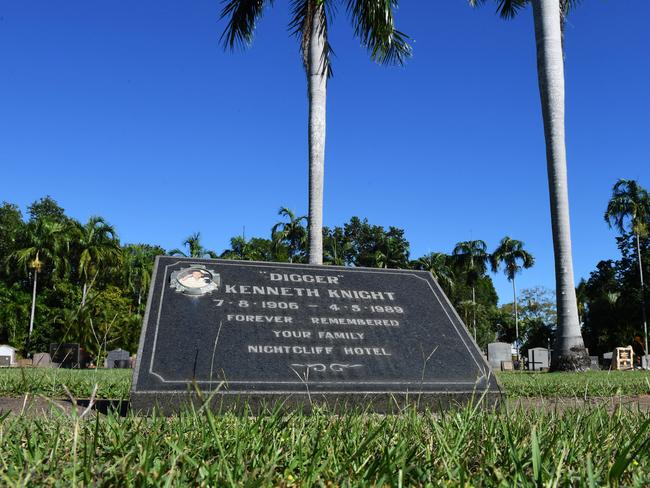
Each year Lachie White helps to commemorate lives of people in the Territory.
He’s a stonemason and owner of Territory Memorials, one of Darwin’s leading memorial companies.
What began as curiosity in his early 20s grew to a career spanning more than 16 years.
“I was drawn to it for something different,” he says.
“In Brisbane I worked with an old monumental mason. He used to make jokes at the crematorium, that the head chef was the guy running the furnace. He was this normal dude that went surfing every day and dealt with the dead.
AMAZING HEADPHONES OFFER
“I was quite drawn aback by the whole death thing and working in a cemetary day in and out. It was a bit confronting as a 21 - 22-year-old but I found it really interesting. You can’t be too serious about it though, otherwise you’ll lose the bloody plot.”
In his career Mr White has created everything from simple, elegant headstones to monuments bearing football teams and personalised logos.
“I’ve done some really big, full monuments. It’s interesting piecing them all together,” he says.
“For a local indigenous fellow he could see an eagle in a rock. It was just a natural rock in the ground and he could see an eagle in it, his totem. He drew the head in the rock and I got the hammer and chisel out and made this eagle head embedded in the rock.
“I do as much as I can but a lot of the stuff is highly technical and you need million-dollar machines. I do take on a lot of the carving, replacing the inlay and put monuments together.”
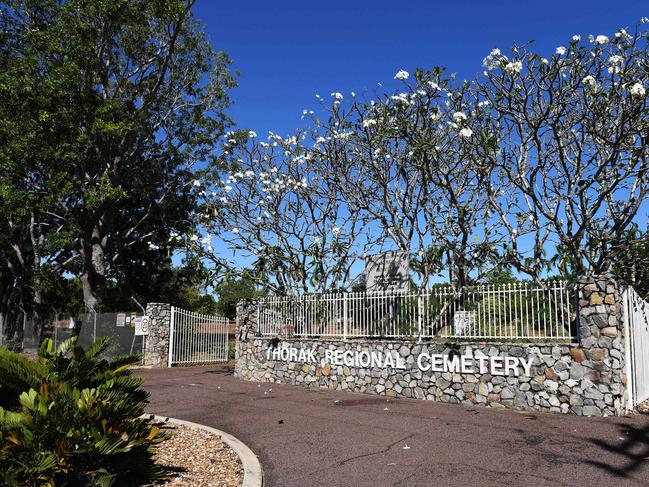
He said one of the biggest challenges of the business was liaising with large families.
“Big families find it hard to make sure everyone’s okay or happy with the design, price and everything,” he says.
“It’s a good feeling though to make people happy and go ‘That was a lot easier than I expected it to be’. They can walk away from it and it’s all done and they’re happy.”
While there will always be an industry for headstones, Mr White believes monumental masonry is standing over its own grave.
“Stonemasonry is a dying trade and especially monumental masons,” he said.
“There are a lot of stonemasons around but not many monumental masons which is slightly different. A lot of people who make benchtops wouldn’t know the first thing about assembling or making a headstone. It’s one of those trades that’s quite specialised.
“Machines are taking over. It’s less hands on in a way and with the monumentals a lot of older people are involved and they don’t have any family members to pass it onto. Then the company and skillset dies.”
Despite the challenges of the trade, Mr White takes pride in his work and continues to ensure people’s lives are reflected in stone.

At Thorak Regional Cemetery the only sounds heard are the trees rustled by the wind and the occasional rush of a truck or car along the highway.
It’s home to hundreds of people from Christians, Catholics, Greek Orthodox, Jews, Muslims and those of their own beliefs who live in harmony.
When a family goes to Thorak searching for an eternal home for their loved one, they speak to Toni Wands.
She is Litchfield Council’s customer service officer for Thorak Regional Cemetery and each day she aims to make burial and cremation experiences as seamless as possible.
“I feel I can actually help the families at the time they need it and try make the process as smooth, informative and stress-free for them,” she says.
“Sometimes their decision making isn’t always the best so you need to give them all their options and choices.”
For burials it’s not as simple as choosing a plot of land. It depends on how a family wants to commemorate their loved one and in a time as distressing as loss, Ms Wands is there to help.
“A typical day could be either organising burials or helping families choose a plot for burial,” she says.
“It could be organising permits the funeral director sends through for a cremation. It could be taking people around and choosing plots, organising memorial permits for headstones and permit applications.
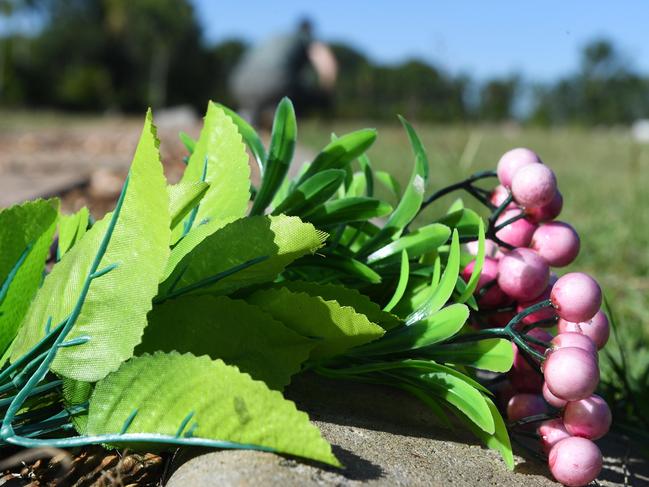
“There are different price options, different areas. I let people know what they can and can’t have. If they put someone in a certain spot they may not be able to have a headstone, or people might want to have a big monument so there’s different areas of the cemetary you’re allowed to put them in. It can be distressing if people put their loved ones over a certain place because it was a cheaper plot but then they can’t put a headstone.”
The lawns at Thorak are impeccable. Each day the grounds staff run a fine-tooth comb across the land to make each family’s visit as pleasant as the last.
“The grounds staff do take a lot of pride in what they do,” she says.
“It’s not just a job. They can get emotional sometimes like anything but its not as if everyone falls apart. You get touched by things.”
It is important to remain composed when surrounded by tears and broken hearts but Ms Wands says compassion is the key to working at a cemetery.
“It can get emotional at times, only cause we’re human,” she said.
“The other day I was helping a family and I did get emotional even though I didn’t know them. I thought I should maybe be a bit tougher but then it’s not being human if you’re not feeling emotions.
“You have to be a person who wants to help others and be sensitive, quite sensitive and organised. You have to be ready to put your work down and go with a family. If a family walks in confused and they don’t know where to start, it’s a matter of going through the process with them.”
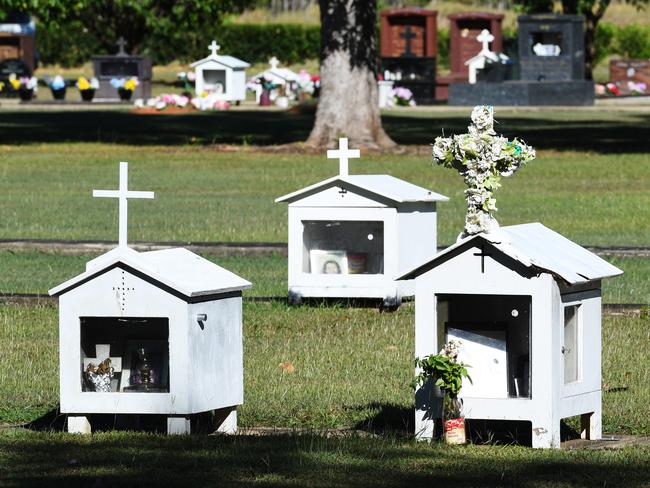
Thorak is not only home to headstones. With a crematorium on site, loved ones can rest in ash internments or into the columbarium.
The Garden of Remembrance, a memorial site for deceased military personnel, is maintained by the Office of Australian War Graves. There’s also the Garden of Angels where children rest.
Ms Wands said people were often surprised at the services offered at the 26 hectare property.
“We even have marquees for hire and all sorts,” she said.
“If you want to have marquees and chairs you can have them so it's a bit more comfortable and to try make the day pleasurable. That’s what it’s all about. It’s a bit like a wedding, it’s a day you remember.
DON’T miss out: Amazing headphones offer for NT News subscribers
“It’s certainly in a nice spot, not like some cemeteries in big cities. You feel like you’re removed.”
Every effort of people in the cemetery industry is to ensure the deceased’s life is duly commemorated.
In the Territory you can trust when the last shovel of dirt is spread or the urn sealed, your loved ones are resting peacefully surrounded by tall trees and colourful flowers, being taken care of by people with the utmost respect.

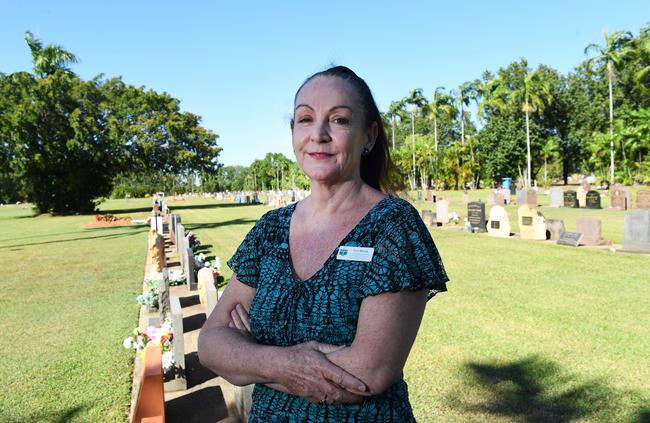

Add your comment to this story
To join the conversation, please log in. Don't have an account? Register
Join the conversation, you are commenting as Logout
Sonny’s search: What’s bringing this SANFL legend to Alice Springs
For more than 50 years, a SANFL legend – and stolen generation survivor – has been returning to Alice Springs on a deeply personal search. Now, he’s had a breakthrough.
‘It’s a coup’: ‘Terminated’ Alice Springs principal’s explosive allegations
The former principal of troubled Alice Springs school is alleging he was sacked after standing his ground over a proposal which is going to be ‘a sh-t show’.